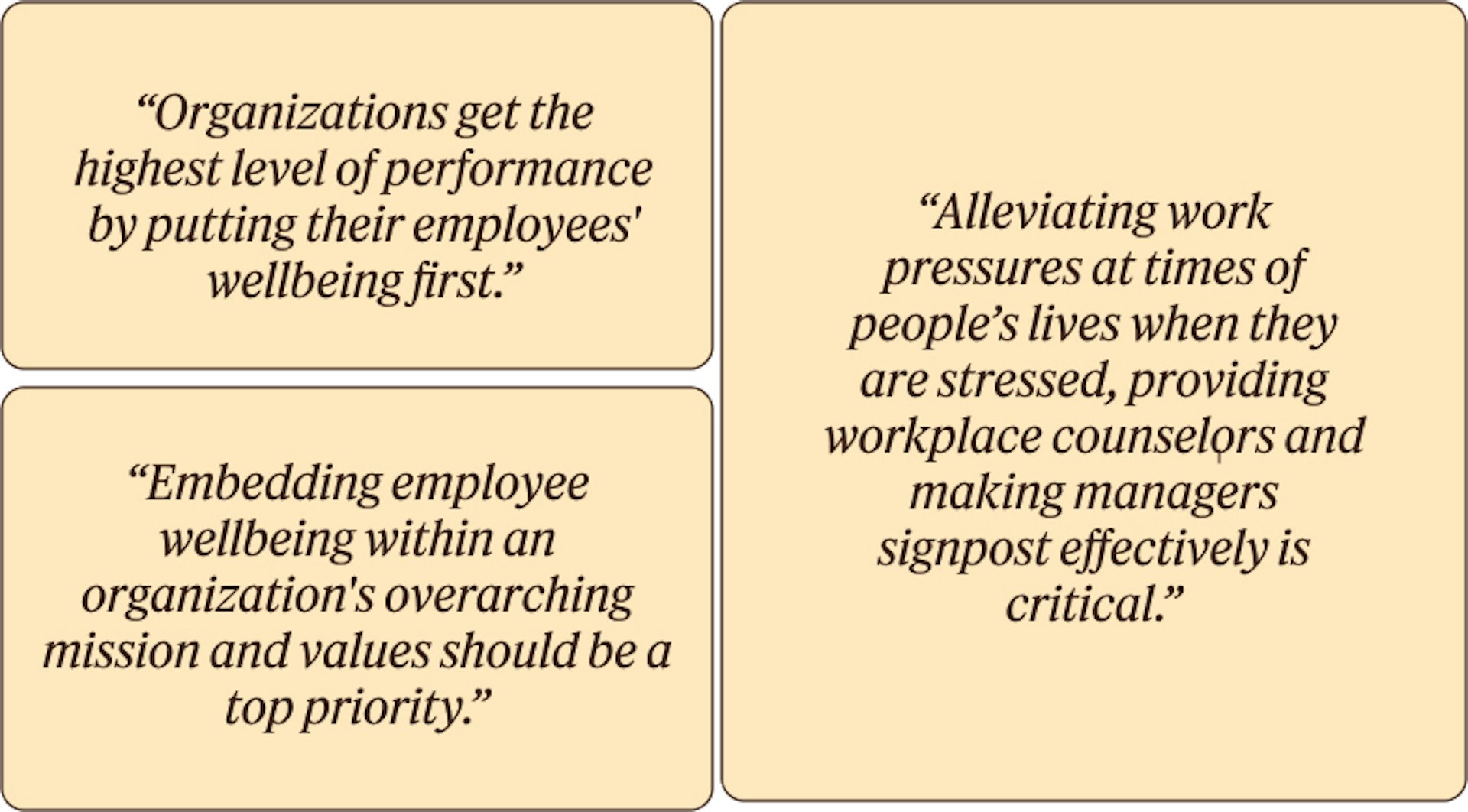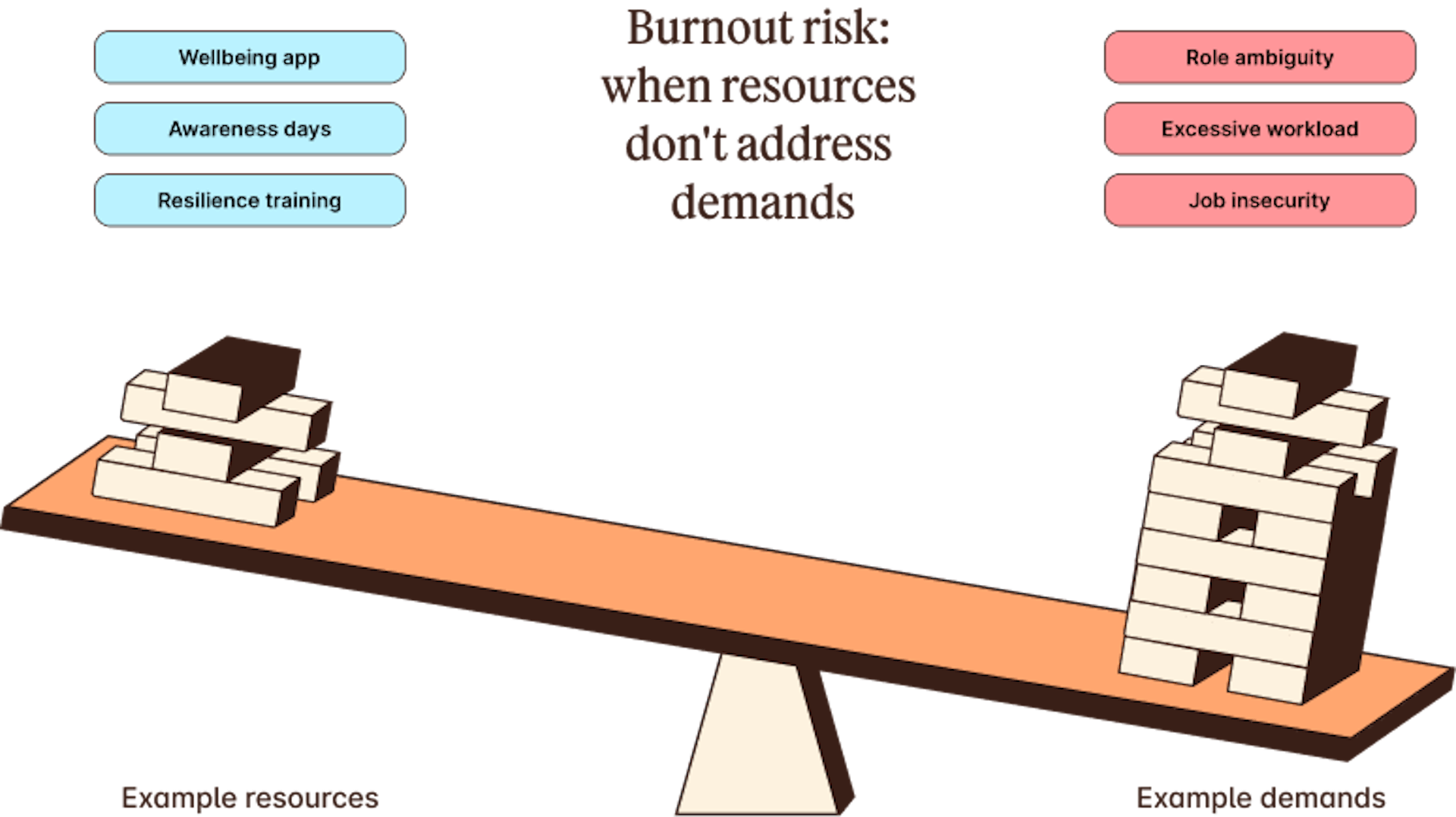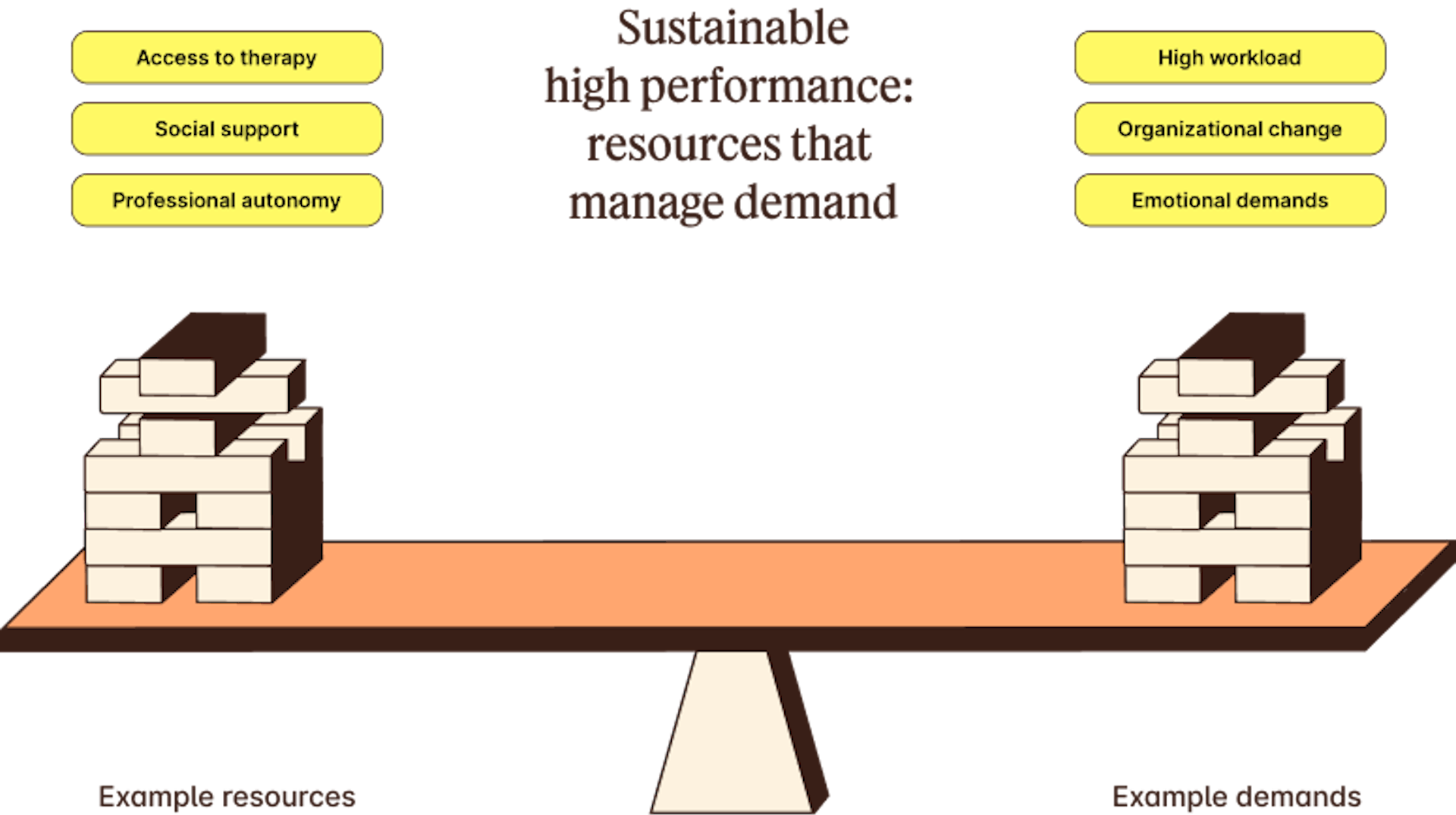From exhaustion to sustainability: How leaders can combat burnout in 2024

Dr. Jazz Croft

Content
- Awareness without action
- Where do we go from here?
- What do HR leaders think?
- Going beyond free fruit and apps
- The limits of resilience
- The new R-word: Resources
- Sustainable high performance – a marathon, not a sprint
- Our vision of the future in practice
- Making work an antidote to burnout
In our recent survey of 3,625 HR leaders, nearly 70% reported an increase in burnout at their organization in the past year. With stress levels at their highest in a decade and the leading cause of sickness absence at work, the problem of burnout should be top of every business agenda in 2024.
Without new ways of thinking, current approaches to employee wellbeing will continue to risk employee health and organizational performance.
Using insights from our Workplace Wellbeing Trends report, HR 2030, we’ll look at common pitfalls that drive burnout and introduce our vision for sustainable high performance to make real change for the workforce by 2030.
Awareness without action
For many organizations, good intentions and more awareness days aren’t bringing the change needed to drive down stress and burnout for their people. Many organizations are ‘wellbeing washing’ – where awareness-raising on mental health isn’t backed up by effective mental health support.

Without clear buy-in and trust in leadership to invest and prioritize mental health, employees become disengaged, feel less supported, and are less able to manage the demands of their roles.
Beyond ineffective investment, there’s also a disconnect between leadership and their people. C-suite leaders underestimate how much their employees are struggling, despite reporting high levels of burnout themselves. This lack of insight stops leaders from tackling problems that increase turnover and lower productivity head-on.
Where do we go from here?
By 2030, we want every organization to understand employee wellbeing is integral to business performance. While combating burnout may seem like a balancing act between employee wellbeing and business objectives, research shows that better wellbeing powers organizational success.

By following the growing evidence that better wellbeing delivers ROI, we can see the reality of burnout as both a critical health and economic challenge.
What do HR leaders think?
In our survey, people leaders not only stressed that wellbeing and performance go hand in hand, but also had clear recommendations on how organizations can achieve high levels of both. These include making wellbeing central to company values, championing flexible working arrangements, improving company culture and upskilling managers around mental health.
Q: How can organizations effectively balance the pursuit of high performance with the wellbeing of their employees?

Going beyond free fruit and apps
Tackling burnout takes a whole-organization approach. It means understanding how wider changes, leadership attitudes and organizational policy influence mental health. This moves us from focusing on each employee to asking how organizations can influence and drive better mental health.
From our analysis across sectors and clients, our data shows that when employees trust their leaders to invest and support their wellbeing, attrition risk and absence due to mental health difficulties are reduced.
Leadership’s impact on employee wellbeing is just one example of how individual-level interventions, including digital tools, aren’t enough to address systemic factors that fuel burnout.
For practical tips on combating burnout in your organization, download our HR 2030 Trends Report here.
The limits of resilience
With this shift of thinking, we can look at wellbeing concepts used in the workplace in a new light. One example is resilience, which refers to adapting and thriving in response to change. Greater individual resilience means a greater chance to thrive, even when things get tough.
While resilience can be a source of positivity in many contexts, it’s not necessarily the antidote to burnout. While we can become more resistant to stressors, there’s a limit to what we can endure.
Whether it’s excessive stress, damaging relationships or discriminatory workplace practices, encouragement to ‘be more resilient’ may be as effective for burnout as a plaster for a broken ankle.

The new R-word: Resources
We can flip the script by using an established concept in organizational psychology: the job demands-resource model., In this model, we can identify aspects of work life according to these categories:
- Demands are sources of emotional or physical stress in our role, such as high workloads, role ambiguity or poor relationships.
- Resources are the positive areas of our work that help us tackle these demands, reduce stress, and achieve goals.
Once leaders have clearly defined demands and resources, they can build strategies and invest in improving working conditions and reducing burnout risk.
Here, resilience and digital mental health tools are effective as part of a bigger picture for resources that manage demands. These include positive factors such as role clarity, positive working relationships, and access to professional mental health support.
By embedding balance and understanding teams’ resources and demands, this model can support building sustainable high-performance cultures.

Sustainable high performance – a marathon, not a sprint
Sustainable high performance looks beyond quick wins and short-term spikes in productivity. It’s about creating an environment that supports employees to perform at their best, consistently and for the long term without compromising their wellbeing.
The concept integrates ways to promote high performance and practices that support the physical, psychological, and emotional health of employees, ensuring they can ‘show up’ fully every day, ready to engage with their work in a meaningful way.
Achieving sustainable high performance involves taking a holistic, strategic approach to wellbeing that ensures workloads are manageable, safeguards against stress and burnout and enables employees to advance professionally and personally.
Our vision of the future in practice
To put these ideas into action, we created the Unmind Playbook – a case study of our own best practices for tracking and implementing organization-wide wellbeing initiatives within Unmind itself.
Over six months, we assessed wellbeing and introduced a range of initiatives tailored to our business, just as we do with clients. We ran workshops grounded in the demands-resources model, provided easy access to coaching and therapy, and delivered mental health training for leaders.
To focus our ambitions, we made ‘net positive impact’ – work having an overall positive impact on employee mental health – a key business success metric, measured every quarter. This makes every team a stakeholder in our wellbeing investment. Across internal channels, leaders championed engagement across the business.
At the end of the study, we saw clear improvements for our people and business. We exceeded our target of 60% net positive impact of work on mental health.
For the bottom line, this led to an annual equivalent saving of 5% of our revenue due to lower costs from mental health difficulties (attrition, absence, presenteeism). Applying this approach to other businesses, larger organizations could benefit from even greater cost savings.
Only 39% of leaders can fully quantify the impact of poor wellbeing on the financial performance of their organizations.
Using a data-driven approach that prioritizes wellbeing within the business, organizations can build a sustainable high-performance culture that makes better employee mental health integral to success.
Making work an antidote to burnout
From HR leaders, we see both the scale of the problem of burnout in 2024 and the need for greater resources for employees that drive real change.
In the demands-resources model, the path from exhaustion to sustainable high performance means equipping employees with the resources they need to thrive.
For every organization, what this looks like and how to embed high-performance will differ. Prioritizing expert consultation, monitoring employee wellbeing, and developing a clear strategy are all steps needed to drive down burnout and create sustainable, high-performance workforces by 2030.
To find out more about sustainable high performance and other top workplace wellbeing trends for HR leaders, read our HR 2030 report.
About the Author

Dr. Jazz Croft, Senior Scientific Liaison
About the Author
